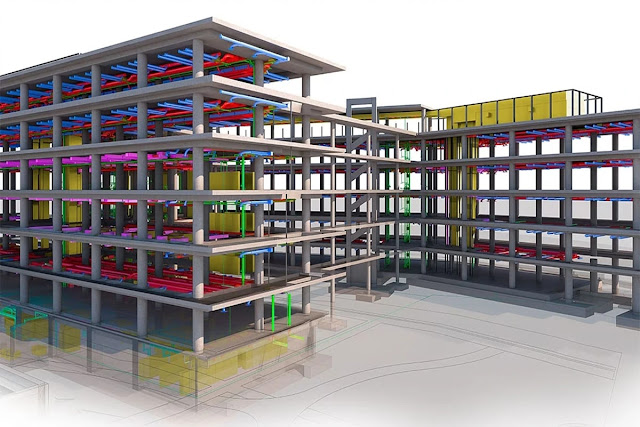Structural
design is a pivotal component in the outcome of any business, as it
straightforwardly influences the strength, wellbeing, and effectiveness of a
building or construction. Be that as it may, the course of structural design
can frequently be complicated and overpowering, particularly for those without
a solid foundation in engineering or engineering.
To improve
on the design interaction and guarantee business achievement, there are key
components that ought to be thought of. This article will investigate these
critical components and give noteworthy hints to improving on structural design
to accomplish ideal outcomes.
Importance
of simplified structural design in business
Improved on
structural design assumes a crucial part in the progress of any business. By
improving on the design cycle, organizations can save time, decrease expenses,
and upgrade the general effectiveness of their tasks. Besides, an improved on
design guarantees that the construction is protected and can endure everyday
hardship.
One of the
critical advantages of worked on structural design is further developed project
the board. A smoothed out design process empowers organizations to dispense
assets successfully and makes it simpler to comply with time constraints.
Furthermore, worked on designs are more straightforward to convey to partners,
guaranteeing that everybody is in total agreement.
Besides,
worked on structural design considers simpler upkeep and alterations down the
line. By recognizing pointless intricacies and disposing of them, organizations
can decrease future expenses related with fixes and remodels.
All in all,
worked on structural design is critical for business achievement. It upgrades
proficiency, diminishes costs, and guarantees long haul security. By executing
the tips gave in this article, organizations can accomplish ideal outcomes and
remain in front of the opposition in the present high speed business climate.
Identifying
key elements for successful structural design
With regards
to improving on structural design for business achievement, there are a few key
components that ought to be thought about. These components won't just guide in
smoothing out the design cycle yet additionally guarantee ideal outcomes and
long haul achievement.
Right off
the bat, directing a careful investigation of the task necessities and
objectives is fundamental. By obviously characterizing the objectives and
assumptions, organizations can design a construction that meets their
particular requirements and wipes out superfluous intricacies. This examination
ought to incorporate factors like spending plan, course of events, and
usefulness.
The second
key component is cooperation and correspondence. It is significant to include
all partners, including draftsmen, specialists, and task administrators, from
the beginning phases of the design interaction. Open and straightforward
correspondence will assist with smoothing out direction and guarantee that
everybody is making progress toward a similar vision.
In
conclusion, using innovation and programming can extraordinarily work on the
design cycle. High level demonstrating and recreation apparatuses empower
organizations to picture the construction, distinguish possible issues, and
settle on informed choices. These instruments additionally work with
coordinated effort and make it more straightforward to convey the design to
partners.
By
integrating these vital components into the structural design process,
organizations can improve on their tasks, lessen costs, and eventually make
progress in their undertakings.
Streamlining
processes and communication
Smoothing
out cycles and correspondence is one more pivotal component in improving on
structural design for business achievement. By distinguishing and dispensing
with superfluous advances, redundancies, and bottlenecks in the design cycle,
organizations can further develop effectiveness and diminish costs.
One powerful
method for smoothing out processes is by executing normalized systems and work
processes. By laying out clear rules and conventions, organizations can
guarantee consistency and stay away from inefficient practices. This
incorporates characterizing jobs and obligations, setting timetables and
achievements, and carrying out quality control measures.
Moreover,
powerful correspondence is fundamental for effective structural design.
Standard gatherings, progress reports, and notices ought to be directed to keep
all partners educated and adjusted. Using project the executives programming or
joint effort stages can likewise upgrade correspondence and cultivate
proficient cooperation among colleagues.
By smoothing
out processes and advancing powerful correspondence, organizations can
streamline the structural design process, limit mistakes, and guarantee ideal
fruition of undertakings. This won't just work on generally efficiency yet in
addition improve consumer loyalty, prompting long haul achievement and
development.
Embracing
technology for efficiency
In the
present advanced time, embracing innovation is fundamental for organizations
hoping to work on structural design and accomplish more prominent proficiency.
By utilizing innovation apparatuses and programming, organizations can smooth
out their design cycles and take their effectiveness higher than ever.
One
significant instrument that organizations can use is Building Data
Demonstrating (BIM) programming. BIM considers the creation and the board of a
computerized portrayal of a building or foundation project. This product
empowers joint effort, coordination, and perception of design components,
diminishing the possibilities of blunders and clashes.
One more
innovation that can improve productivity in structural design is recreation
programming. Recreation devices permit designers to test the presentation and
conduct of a construction in a virtual climate. By dissecting various
situations and making changes as required, organizations can improve their
designs before any actual development happens, saving significant time and
assets.
Moreover,
distributed computing and cooperative stages give an incorporated space to
colleagues to access and work on project documents at the same time. This
disposes of the requirement for numerous renditions of documents and empowers
continuous cooperation, advancing effective correspondence and forestalling any
postponements or miscommunications.
By embracing
innovation, organizations can change their structural design processes, further
developing effectiveness, exactness, and coordinated effort. This outcomes in
cost reserve funds as well as improves the general nature of the end result.
Remain tuned for the following area as we investigate the significance of
nonstop learning and improvement in working on structural design for business
achievement.







